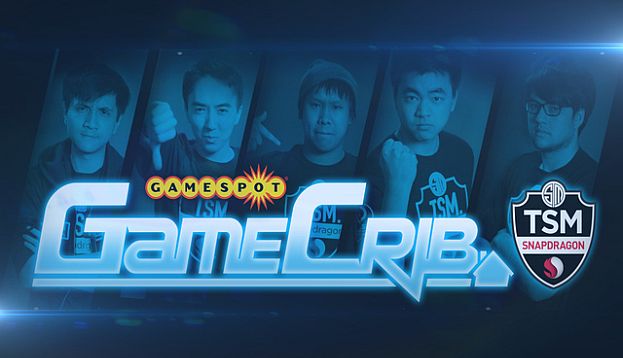CBS Interactive, the corporate force behind GameSpot, has announced the hiring of Kim Rom as vice-president of eSports. The move signals the increasing importance of eSports to CBS Interactive as well as the growing impact of video. GameSpot has been using more video on its site, leveraging the native expertise with video that CBS Interactive derives from its connection with CBS. GameSpot is the creator and host of the weekly reality web series, GameCrib which follows the drama of pro-gaming eSports team TSM Snapdragon, who live together in a house in the San Francisco Bay Area.
 CBSi VP of eSports Kim Rom
CBSi VP of eSports Kim Rom
Danish native Kim Rom was previously chief marketing officer for SteelSeries, the Danish manufacturer of gaming peripherals and accessories. Rom’s immersion in eSports also includes several team management positions including the world-champion Counter-Strike teams and the Electronic Sports League in Denmark. He also organized the WorldCyberGames, Electronic Sports World Cup, Cyberathlete Professional League, Danish Esports League and Electronic Sports League events in Denmark.
The [a]list daily talked with CBS Interactive senior vice president and general manager of the games division David Rice and vice president of eSports Kim Rom about the move and what it means.
“eSports is the fastest growing media area in games,” said Rice. “It’s not just an opportunity, it’s a must presence for my division to be playing aggressively in eSports.” Rice sees eSports as a major growth area for CBS Interactive. “You can see some of the things we’ve done over the last six to twelve months, from hosting events with EA Sports to launching GameCrib.” GameSpot has been part of the tremendous growth in eSports popularity over the last few years, and looks to expand thatparticipation with Rom’s hire.
“I want to build on the strengths CBS Interactive already has, which are discoverability and accessibility,” said Rom. He feels that eSports has been very slowly growing for many years, but now it’s really begun to talk off with the popularity of streaming. Working with the enormous audience that GameSpot already draws will make it even easier to bring in new eSports fans, Rom believes, and it’s not just in North America.
“The global reach of eSports is due to the very nature of what it is,” Rom said. “The digital culture and gaming are global.” Rice explained more about the nature of the global eSport audience. “The competitions can be global,” said Rice. “It’s not like FIFA in Europe or the NFL in the US, where you physically have to be present to watch them.” Because most of the audience is online, it lends itself to a global. You can watch your favorite athlete whether he’s in Chile or Taiwan, Rice noted.
Shows like GameCrib are a natural part of eSports, Rice feels. “It’s mirroring the evolution of sports in general,” Rice said. “Sports at the very beginning you had to watch in a stadium, then came broadcast television. You started creating stories because video is the richest medium out there. Look at ESPN, the majority of the programming there is around the sport rather than the sport itself. There are great stories behind all of these teams.” GameCrib has drawn a large audience, and the second season is under way. “It’s expanding this amazing passion that people have, not for game play but for game competition,” Rice said.
Expanding the eSports audience requires that people understand what’s going on in the game, especially when the game is complex like League of Legends. “Absolutely,” said Rom. “We will be focusing on making it accessible and easy to digest, making it entertaining. The games are becoming much more accessible. I think you’re going to see games like League of Legends become easier to understand.” Developers have an incentive to make it easier to understand what’s happening in the game for people watching. That’s already been happening with games like Call of Duty, according to Rice, and we’ll likely see more it given the growing importance of eSports.
The impact of next-gen consoles is more as a new media outlet for streaming video than as a source for competitions. Rice points out that eSports are mostly PC-based, not console-based. But next-gen consoles are pushing media, and Rice sees them as a great place for gamers to watch eSports and programming like GameCrib. “Kim understands the eSports audience and can take advantage of the CBS strengths around premium programming and bring that to the new consoles when they get launched,” Rice said. “You’ll be seeing us working very closely with Sony and Microsoft in terms of getting programming for those new platforms.”
The explosive growth of eSports over the last few years is not over, according to Rice. “I think we’re going to see continued growth,” said Rice. “New consoles are going to offer a whole bunch of new distribution possibilities. A year or two ago it didn’t make economic sense for folks like me to create the human interest stories. Now that you’ve got an audience in the millions and millions, and the views in the hundreds of millions of streams, it makes it viable to be creating all this premium programming like GameCrib. In my mind we’re creating an entertainment genre that will be on the same scale as movies or sports. You’ll see the time spent on game play and game-related programming rival the time spent on watching sports.”
Where are the advertisers Will they be looking at reaching these massive audiences “The 18-34 year old male is the most difficult audience to target for advertisers,” said Rice. “The number one way to target them is gamers. In a lot of our shows what you’ll see from a monetization perspective is brand integration. The brands don’t just want to be at the front of the pre-roll, they want to be integrated into the content itself.”
GameSpot will continue to push forward into video programming with eSports, premium programming and more content on the site. The growth of video game content looks to continue at the same rapid pace for some time to come, and in the process it is transforming consumer and business sites alike.

